Nikon Nikkor AF-S 24-70 mm f/2.8G ED
8. Vignetting
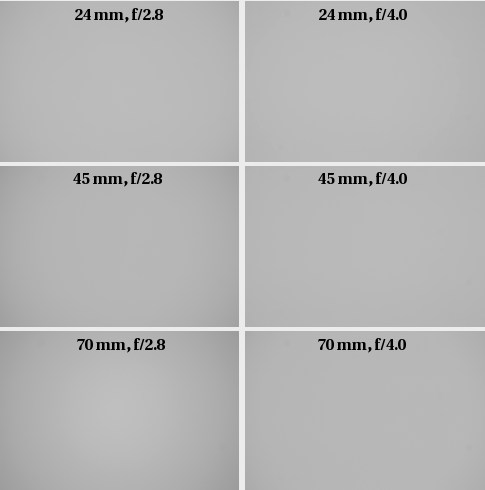
At 24 mm focal length and the maximum relative aperture the vignetting won’t be bothersome at all because its value reaches only 9% (-0.28 EV). Such a result is noticeably better than in the case of the Sony/Zeiss (14%) and the Canon (24%).
Please Support UsIf you enjoy our reviews and articles, and you want us to continue our work please, support our website by donating through PayPal. The funds are going to be used for paying our editorial team, renting servers, and equipping our testing studio; only that way we will be able to continue providing you interesting content for free. |
- - - - - - - - - - - - - - - - - - - - - - - - - - - - - - - - - - - - - - - - - - - - - - - -
In the middle of the range still we don’t see any problems. By f/2.8 the brightness loss in the frame corners amounts to just 13% (-0.40 EV) and it decreases to 5% by f/4.0. This result is once again better than that of the Canon (18%) and almost as good as that of the Sony (11% wide open and 8% on stopping down).
The biggest chances to notice any vignetting in the case of the Nikkor we get at 70 mm. There, at the maximum relative aperture it is 19% (-0.59 EV) and it decreases very quickly because by f/4.0 it amounts to just 6%. Here the Sony has a bit better result (15%) and the Canon is once again the worst of all (22%).
To sum up on the small sensor the Nikkor won’t cause us any problems with vignetting. It keeps the same high level like the Sony, and, what’s interesting, at every focal length it fares better than the Canon, which had it even easier after all because it was tested on a tad smaller sensor of the Canon 20D.
The assessment of the real lens’s performance is possible only after checking how it fares on full frame for which it has been designed. The thumbnails we got using the full frame Nikon D3x are presented below.
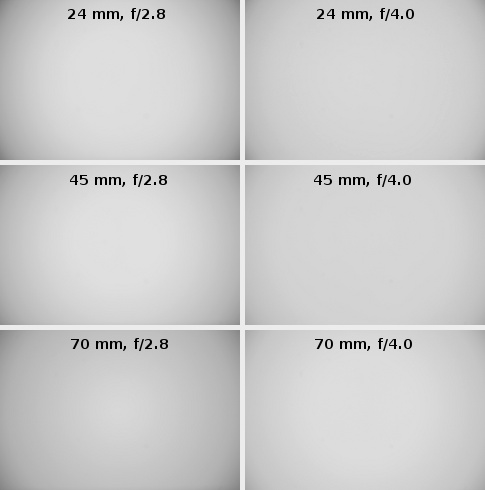
The vignetting is far easier to notice here. Our measurements confirm it too. At the most difficult combination of the wide angle (24 mm) and the maximum relative aperture the light fall-off in the frame corners amounts to 42% (-1.58 EV) and it decreases to 28% (-0.96 EV) by f/4.0. By f/5.6 aperture the problem becomes slight (17%) and it disappears completely by f/8.0 and f/11 where we get 11% and 9% respectively.
The best situation we observe in the middle of the focal range. By f/2.8 the vignetting reaches 34% (-1.22 EV) and it decreases to 20% (-0.63 EV) by f/4.0. Then the problem disappears by f/5.6 where the vignetting is just 9%.
At the maximum focal length and the maximum relative aperture the brightness loss in the frame corners reaches 38% (-1.36 EV). The stopping down of the aperture by 1 EV makes the level of this aberration decrease to the value of 23% (-0.77 EV). The problem disappears practically completely by f/5.6 where it is just 11%.
The vignetting values presented by the Nikkor on full frame are perhaps not the lowest but we certainly shouldn’t carp about it. It is a fast zoom lens with the angle of view of over 80 degrees. An attempt to eliminate the vignetting completely in such a construction would end in increasing its weight and dimensions and then everybody would complain that it is too heavy.
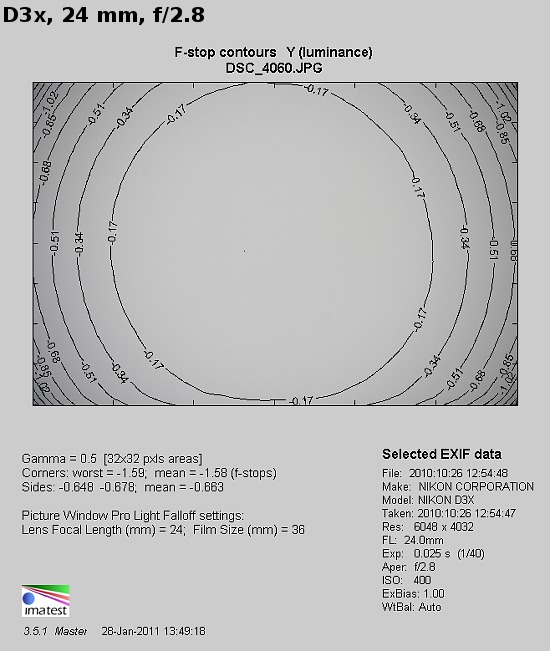 |
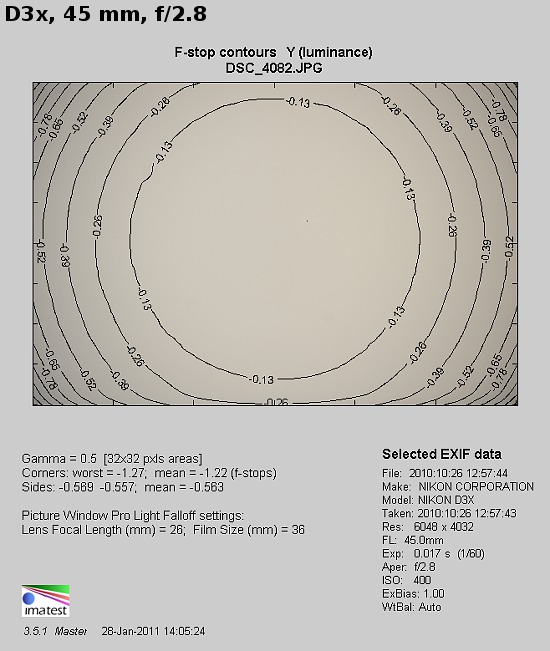 |
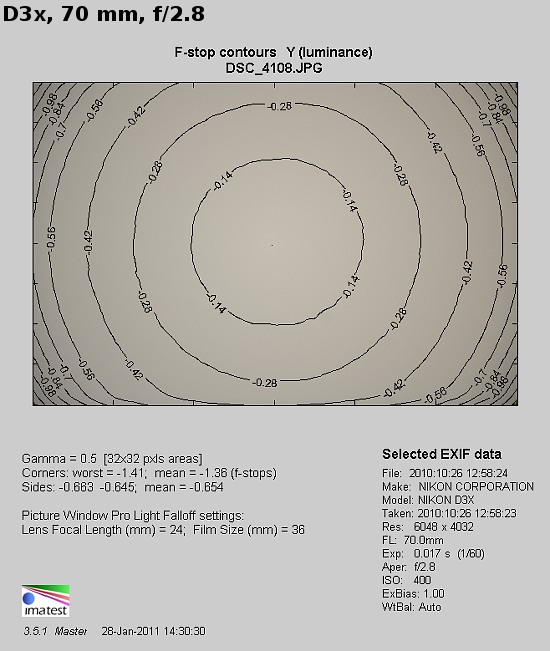 |






